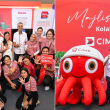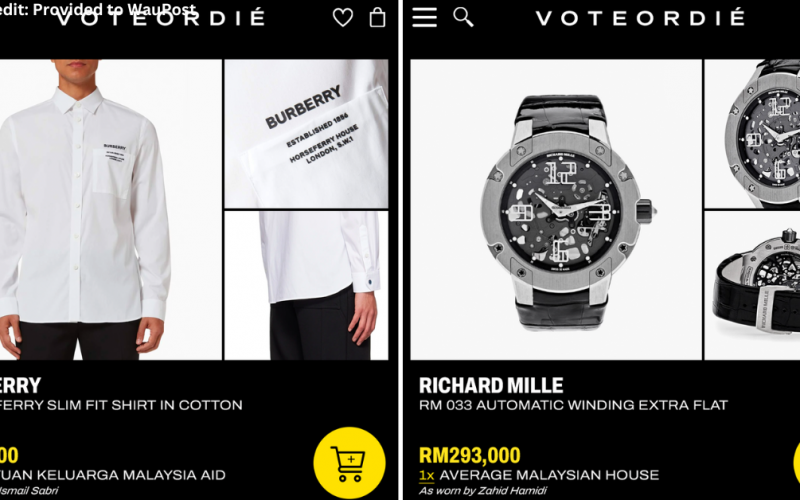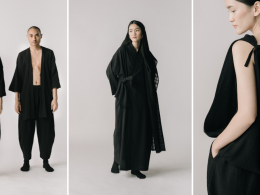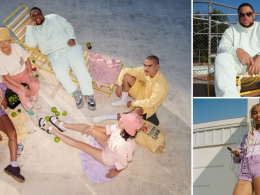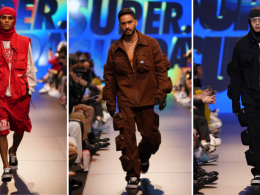As one of the most conspicuous forms of expression, fashion takes on many guises to suit a wide spectrum of palates and interests. Whether it be the unapologetically severe lines of power dressing, or the loose ease of Bohemian fantasy, the artform takes the form within the confines and context of the space it inhabits, serving the penchants and whims of the individual.
But in the case of cultural garments, there tends to be a certain expectation of not just respect, but reverence that goes into wearing it. And perhaps even more so when designing and introducing it for perpetuity’s sake.
Local fashion label BEHATI faces criticism over new campaign
Over the past week, local fashion label BEHATI has been once again caught under the harsh glare of the media’s spotlight after photos of their upcoming PELANGI campaign, set to debut come this Ramadan season, circulated online. Resplendent in lustrous swathes of duchess, the coming collection is expected to remain true to the brand’s acutely modern interpretation of local garb, complete with oversized silhouettes.

However, furor has reached a fever pitch this time around from within the local Malay community over the brand’s campaign, many of whom have objected against the trivialisation and distorting of their culture.
In fact, some have accused BEHATI Creative Director Kel Wen, who is of Malaysian-Chinese descent, of cultural appropriation.

Speaking to WauPost on account of the backlash that his campaign has weathered, the city’s fashion l’enfant terrible took to explaining that PELANGI was initially meant to serve as a celebration of his brand’s fifth anniversary.
“I wanted to celebrate the most prominent brand codes – COLOURS. BEHATI is known for our vibrant colours choices since Day 1, so what’s stronger than a rainbow themed collection that features all primary colours in our signature silhouettes – the Baju Melayu Oversaiz Viral and our best seller Baju Atas.”
And just like the natural phenomenon it borrows its namesake from, Kel Wen said that PELANGI also represents the ‘sunny days after a storm’, reflective of the multifaceted community of post-independence Malaysia that he describes as being an integral part of his upbringing.
“I wanted to share my personal experience as a Malaysian – a kampung boy from Muar who travelled to KL for his city dreams,”
Kel Wen looks to make traditional codes versatile

Since his debut collection back in 2018, Kel Wen’s BEHATI has always been synonymous with its retelling of traditional shapes, distending conservative lines into sumptuous, excessive takes on cultural garb. While popular within the fashion set, they have equally earned the label its fair share of criticism for the brand’s alleged lack of regard for provenance.
“The original concept was to create a Baju Melayu that is versatile to style in many ways, inspired by an oversized sweater.
I wanted to pair it with my jeans for a casual Raya outings with friends or my black pants for a formal wedding, that still looks trendy enough to stand out at a fashion event.”
Having studied the construction and form of the Baju Melayu, Kel Wen took to inflating its proportions to create his label’s now signature piece.

With that said, the gripes concerning modesty, or a lack thereof, with the PELANGI campaign remains. Referring to a flashpoint moment where one of his Baju Melayu Oversaiz tops had been styled as a dress with a pair of shorts hidden underneath the garment’s excessive hemline, Kel Wen claims that it was inspired by a client of his Western clientele.
“The styling idea was actually inspired by one of our customers from the West who dressed that way [with the Baju Melayu Oversaiz] during fitting, without the knowledge that it’s traditionally worn with longer pants.”

Justifying the decision by saying that he had considered the sensitivity of the outfit beforehand, he adds that it was never his intention to ‘sexualise’ the Baju Melayu.
“I did not dress my model with the intention of ‘sexualising’ Malay attire, because I did not make sexy cutouts on a Baju Melayu, it’s only a matter of styling, the Baju Melayu Oversaiz remain traditionally as it is.”
“I understand that being ‘sopan’ and ‘elok’ is an important part of the Malay culture, those who opted that lifestyle can style it in their way, and the same concept applies to everyone else who has their own culture and religion.”
Navigating controversy with BEHATI
Underscoring his ambition to take local culture into the Western mainstream consciousness, Kel Wen aptly refers to the process as an evolution of tradition and believes that tradition and culture exist beyond religious faith.
“The more people can enjoy the tradition in [the context of] their own culture, the longer the tradition will endure.”
As for how he has coped with the onslaught of vitriol, Kel Wen makes a point of keeping his nose in his work and strives to articulate himself better through his future campaigns. But even then, there’s no denying the sting he feels from barbs that take aim at his race.
With his scholarly intrigue into fashion history, he points out that his knowledge of Malay traditional attire went beyond the superficial as he has committed himself to studying the craft from professionals within the field.
“I want people to know that a Malaysian-Chinese is capable of advancing Malay traditions too.”
With all that said, this debacle only seeks to add to the discourse as to just how far should the envelope for tradition be pushed, more so in the wake of objections from those whose traditions they belong to. Would the label benefit in reciprocity in their pursuit for cultural exchange?
Tap here to give us a ‘Like’ on Facebook and stay up-to-date on the latest news!


